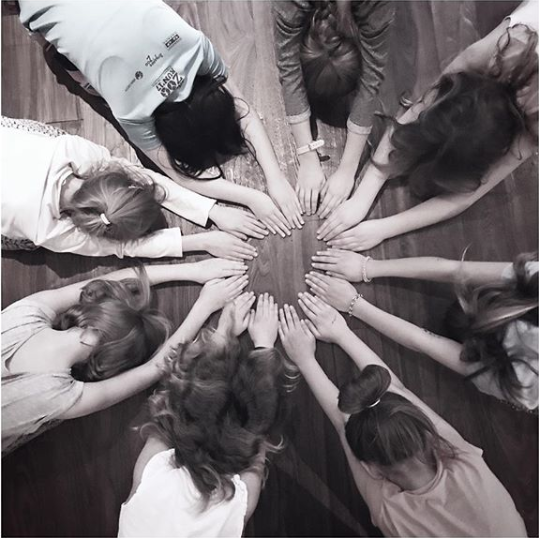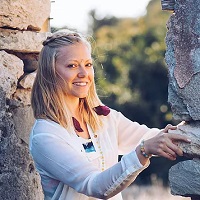
Have you ever heard that yoga is more than a physical practice?
I used to cringe every time anyone would refer to yoga as stretching or toning. I loathed pictures of yoga poses on white beaches in front of beautiful sunsets. I could feel myself almost getting angry every time I saw a thin, flexy-bendy, beautiful yogi with long, flowy hair turn herself into an impossible shape.
Oh, how I’ve fought the Western view on yoga where everyone, in my mind, seems to think this is a practice of flexibility and strength. But there’s actually a lot that a purely physical practice can teach us.
I myself got into yoga through the physical practice, and at the time I had no clue that yoga bore a much deeper meaning. We did sun salutations, the typical sequence of heat-building poses used originally in hatha yoga, as a warm-up for our modern dance classes during my dance education. And as a trained dancer and dance teacher, I turned to Bikram yoga; I loved the almost military strictness of the classes and how the heat loosened my body to get deeper into the stretches.
At this point, I had no clue about the yogic philosophy that would soon enter my life and turn it all around.
When I started practicing yoga, I would do it from the outside in. The first studios I practiced in had mirrors, so I would correct my poses according to what I saw, and I would compare myself to the other yogis in the room.
I had to make a decision: either I could continue to compare myself to others and use yoga as a tool to control and shame my body, or I could start letting go of the outside and begin to feel what my body was telling me. And the more I connected with my body, the better I became at hearing what my body really needed. Deep breaths, sometimes an extra push, but mostly a more gentle approach.
I realized that we’re all here fighting the same battle—the battle of calming the mind chatter and connecting with the body. And the poses are the perfect tools for getting out of the mind and into the body.
Even though I would love to see everyone who takes a yoga class also engaging in traditional yogic philosophy, I do realize that the physical practice of asana (poses), is what we typically mean when we talk about “doing yoga.” So instead of feeling sad that the physical part is the widely known part of the practice, how can we benefit from doing it?
Yoga teaches us that we are perfect just the way we are.
I started to notice how I automatically fidgeted with my clothes as soon as I felt uncomfortable and how I was always wiping sweat off of my face. This is unnecessary, not only because the clothes will soon be in a mess again, but because the sweat will continue running down into my eyes, resulting in my moving more than necessary, which is a complete waste of energy. Also, because every action taken to “fix” the outside weakens the connection with the inside just a little.
It might just be that when we notice the small, automatic behaviours, we realize that we’ve been putting too much effort into things that immediately come undone, losing both our energy and our connection. Yoga teaches us that we don’t need to fix anything. Yoga teaches us to accept ourselves and everything that comes with that. Yoga teaches us to see the beauty and ease in just being.
Yoga teaches us how to take better care of ourselves.
Have you ever been in a pose and noticed that you’re trying with all your might to get deeper into it? In some of the calmer poses, I would find myself using strength to get deeper. If I could pull, rock, or press myself deeper into the pose, I would. I want to blame my former life as a dancer for that, but in reality I see almost every student passing through my classes do the same thing.
What this approach tells us about how we care for our physical body in other aspects of life is different for everyone. For me, it was about years of not being happy with my body and how it performed. But what if we just let go of the image of how a perfect pose should look, or how close our nose should be to our knees in a forward fold, and instead focus on how the body feels in each given pose? Maybe we can start to appreciate that we’re even able roll out our yoga mat at all. Yoga can help us appreciate the fact that we even have a physical body that lets us take up space in this magical world.
Yoga teaches us to be humble.
I remember one evening when I was laying flat on my face after attempting crane pose according to an Instagram tutorial I had watched, and I had a beautiful reminder that I’m human. No one should be expected to be good at anything the first time we do it. It’s okay to feel like a total newbie; it’s okay to feel and maybe even look foolish as we attempt new things in life. And that is beautiful.
Is it okay then to just do yoga as a physical practice and forgo the other teachings that yoga shares? Out of respect for all the yogis who have stood before us, who have fought to give us these practices, I would say no.
We cannot call yoga stretching or toning and stop there. Yoga is a way of living; it is a way to bring peace and love into the world. But we all have to start somewhere, and the physical practice of yoga is a great place to start.
~
Relephant watch: 5 Mindful Things to Do Each Morning.
~
~
Author: Theresé Täckenström
Image: Author’s own
Editor: Nicole Cameron
Copy Editor: Sara KÄrpänen






Read 32 comments and reply